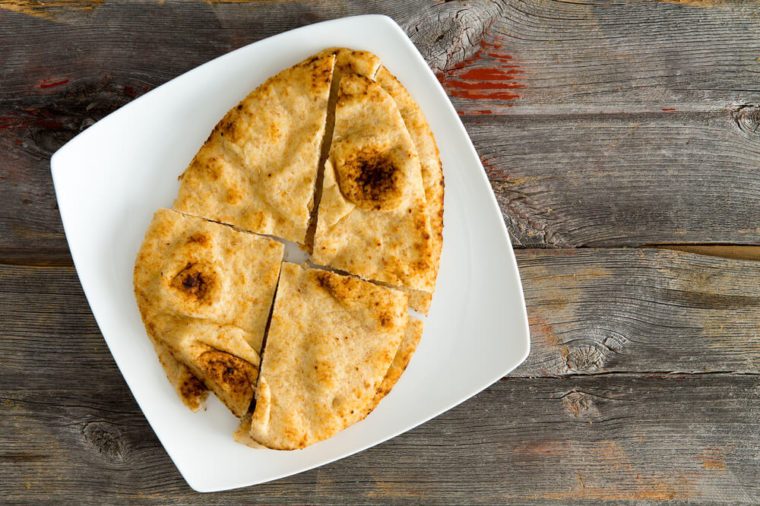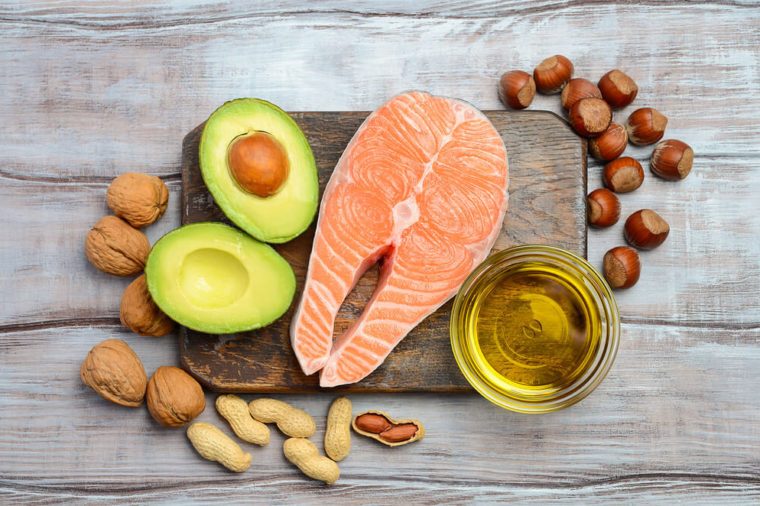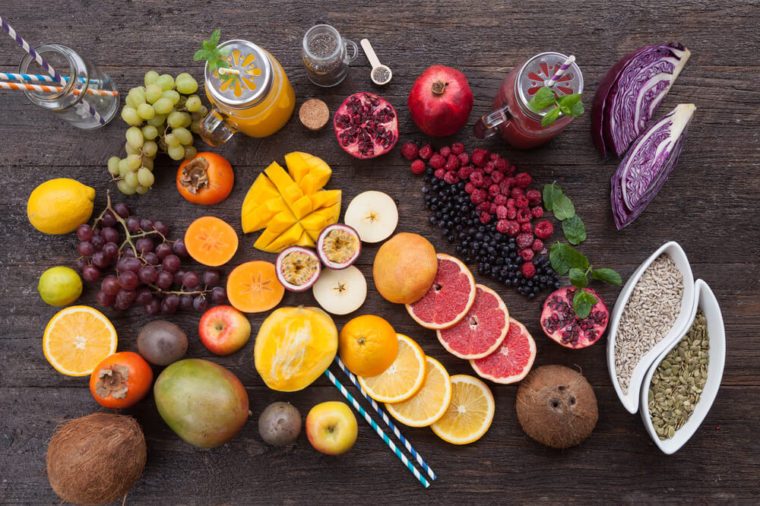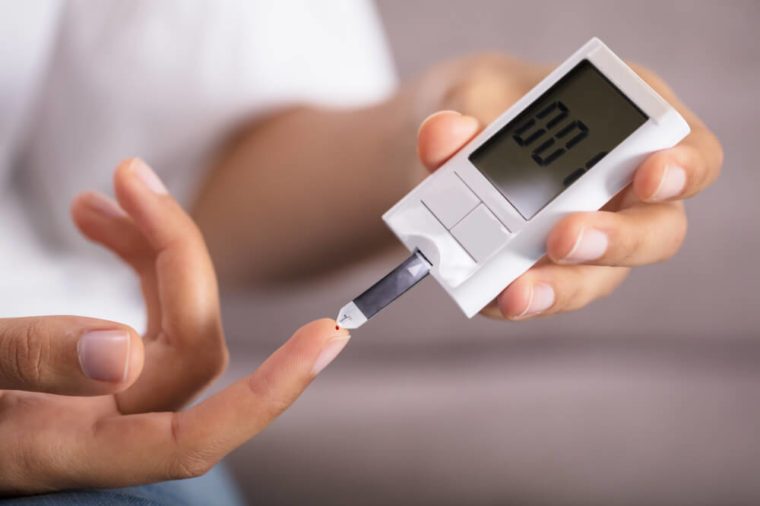Think small carb portions

Eat… healthfully
If you’ve been recently diagnosed with type 2 diabetes, you may be experiencing a range of emotions, including stress and anxiety. “People are relieved to know that a healthy eating plan for people with diabetes is the same as it is for people without,” says Toby Smithson, RDN, diabetes lifestyle expert and author of Diabetes Meal Planning and Nutrition for Dummies. The good news: there’s really no need to overthink it.
Aim for the rule of three

Balance your plate
Though there are many foods that are “bad” for diabetics, filling out your plate doesn’t have to be complicated. Start with low-cal, low-carb, non-starchy veggies, recommends Weisenberger. That includes spinach, broccoli, squash, and tomatoes. Then add whole grain and protein (salmon, chicken, beans). For satiating fat, grab a small portion of olive oil, nuts, or avocado. Make sure you’re not making these diabetic eating mistakes while you’re at it.
Know what “counts” as a carb
It’s not just your bread and pasta that falls into the carb category. Fruit, starchy veggies (potatoes, peas, corn), as well as milk and yogurt, are also considered carbohydrates. (Non-starchy veggies do contain carbs, but in much smaller amounts.)
Don’t fear fruit

Eat enough
While weight loss is important for people who have type 2 diabetes or prediabetes, it’s also critical to eat a satisfying amount of food, too. “Many people try to diet their diabetes away at the risk of being miserably hungry,” says Weisenberger. Remember that out-of-control hunger can have you reaching for not-so-nutritious choices like junk food.
Content continues below ad
Experiment with veggies
You already know that eating balanced meals includes a hefty dose of non-starchy veggies. These not only provide vitamins, minerals, and antioxidants, but they’re also essential in filling you up. The key? “Find veggies you enjoy, add variety, and experiment with ways to cook them to jazz them up,” says Smithson. For instance, try roasting radishes. If you need help increasing your intake, here’s how to sneak more veggies into your diet.
Start the day right

Love legumes
If you have type 2 diabetes your goal is to increase your insulin sensitivity. Some specific foods help with this, like oats, barley, and legumes (like lentils). In fact, beans are one of the top 15 foods for diabetics. Legumes’ fiber or resistant starch feeds healthy bacteria in the gut and can help decrease insulin resistance, explains Weisenberger. Still, watch portions, as these foods contain carbs, too.
Spice things up
Cinnamon, cumin, oregano, curry: add a boost of flavor to your meals with herb and spices—these spices can help fight disease and ease insulin resistance, says Weisenberger. “Cook with them liberally.” She also mentions that they can help replace the amount of salt needed in the meal. (High blood pressure is a problem for two out of three people with diabetes; those with the condition are advised to limit sodium consumption.)
Learn your numbers

The post 12 Rules to Follow to Keep Blood Sugar Steady appeared first on Reader's Digest.
from Reader's Digest http://ift.tt/2DWpiM9
ليست هناك تعليقات:
إرسال تعليق